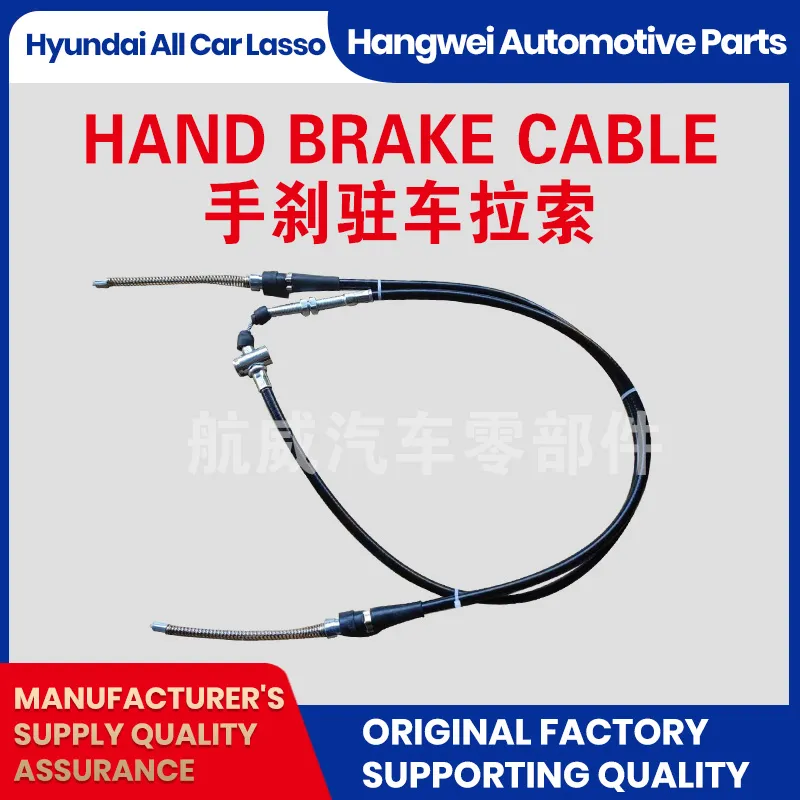cable hand brake
Understanding the Cable Hand Brake A Comprehensive Guide
The cable hand brake is a crucial component in many vehicles, ensuring safety and control when parked or during operation. This device, commonly found in cars, bicycles, and various machinery, utilizes a cable mechanism to engage and disengage the brake system. Understanding how the cable hand brake functions, its advantages, and maintenance tips can enhance both vehicle performance and safety.
How the Cable Hand Brake Works
The cable hand brake operates through a simple yet effective mechanism. When the driver pulls the lever or presses the pedal, it pulls on a cable that runs to the brake system. This action causes the brake pads or shoes to press against the rotors or drums, creating the necessary friction to halt the wheel's movement. The design allows for quick engagement, ensuring that the vehicle remains stationary, particularly on inclines.
In most vehicles, the hand brake is mechanically linked to the rear brakes only, providing an additional layer of security. It operates independently of the vehicle’s main braking system, which means even if the primary brakes fail, the hand brake can still hold the vehicle in place. This redundancy is especially important in mountainous regions or areas with steep terrain.
Advantages of Cable Hand Brakes
One of the primary advantages of cable hand brakes is their simplicity and reliability. They are relatively easy to install and maintain compared to hydraulic systems. Moreover, cable systems are less susceptible to issues caused by fluid leaks or pressure loss, which can affect hydraulic brakes.
Another significant advantage is their ease of use. Drivers can engage or disengage the hand brake quickly and intuitively. Additionally, cable hand brakes provide a tactile response, allowing the driver to feel when the brake is properly engaged. This feedback is crucial in preventing accidents caused by improper engagement.
Maintenance Tips
cable hand brake

Regular maintenance of your cable hand brake is essential for ensuring optimal performance. Here are a few tips to keep in mind
1. Inspect the Cable Periodically check for fraying or wear on the cable itself. If you notice any damage, it should be replaced immediately to prevent brake failure.
2. Lubricate the Mechanism Keeping the cable and the lever mechanism lubricated can reduce friction and wear. Use a suitable lubricant to ensure smooth operation.
3. Adjust the Tension Over time, the tension in the cable may loosen, leading to decreased effectiveness. Regularly check and adjust the tension according to your vehicle manufacturer’s specifications.
4. Check the Brake Pads or Shoes Ensure that the brake pads or shoes linked to the hand brake are in good condition. Worn-out pads can reduce braking efficiency.
5. Consult a Professional If you encounter any issues or notice that the hand brake doesn't engage or disengage properly, it’s best to consult a professional mechanic. Attempting to troubleshoot complex issues without expertise can lead to further damage.
Conclusion
The cable hand brake is an indispensable safety feature in many vehicles. Its straightforward design, reliability, and ease of use make it a favored choice for car manufacturers and drivers alike. By understanding its operation and conducting regular maintenance, you can ensure that your cable hand brake remains effective and contributes to your vehicle’s overall safety. Whether you're driving through city streets or navigating challenging terrains, a well-maintained cable hand brake is a vital asset for any vehicle. Don’t overlook this essential component; prioritize its care and enjoy the peace of mind it brings.
-
Upgrade Your Control with Premium Throttle CablesNewsAug.08,2025
-
Stay in Control with Premium Hand Brake CablesNewsAug.08,2025
-
Experience Unmatched Performance with Our Clutch HosesNewsAug.08,2025
-
Ensure Safety and Reliability with Premium Handbrake CablesNewsAug.08,2025
-
Enhance Your Vehicle with High-Performance Clutch LinesNewsAug.08,2025
-
Elevate Your Ride with Premium Gear CablesNewsAug.08,2025
